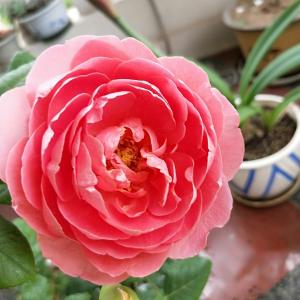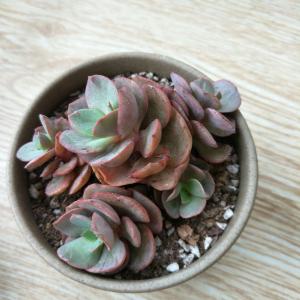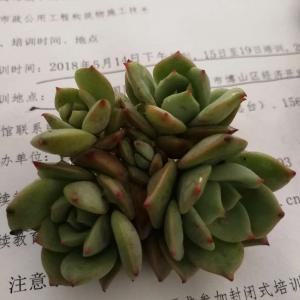文章
Miss Chen
2018年05月10日

Description: This perennial wildflower is 3-10" tall, consisting of one or more stems with alternate leaves and compound umbels of flowers. The light green to reddish brown stems are stout, longitudinal ridged, and glabrous; sometimes they are erect, but more often sprawl across the ground. The leaves are up to 5" long and 3" across; they are ternately compound (typically divided into 3 leaflets). Each leaflet is irregularly cleft into about 3 narrow lobes; these lobes are oblong, elliptic-oblong, or narrowly oblanceolate and their margins lack teeth. The blades of the leaves (i.e., their leaflets) are light to medium green and glabrous, while their long petioles are sheathed at the base.
The stems terminate in compound umbels of white flowers. Each compound umbel consists of 1-4 umbellets, while each umbellet has 1-6 flowers. The flowers of each umbellet are closely bunched together because their pedicels are quite short. At the base of each umbellet, there is a small leafy bract. Each flower is about ¼" across, consisting of 5 narrow white petals, 5 stamens, a divided white style, and no sepals. The anthers of the stamens are initially dark red, but they soon turn black. The blooming period occurs from early to mid-spring and lasts about 1 month. Each flower is replaced by a slightly flattened globoid fruit (a schizocarp) that contains a single seed. The root system consists of a corm with fibrous roots. This wildflower reproduces by reseeding itself. Occasionally, it forms loose colonies of plants.
Cultivation: Some dappled sunlight is required during the spring, otherwise shade is tolerated. Moist to mesic conditions and a rich loamy soil with some rotting organic matter are preferred. Most vegetative growth and development occurs during thePlant in Bloom spring.
Range & Habitat: The native Harbinger-of-Spring has a scattered distribution throughout most of Illinois, but it is absent from the NW section of the state (see Distribution Map). It is occasional in some woodlands, but mysteriously absent from many others. Habitats include rich mesic woodlands with deciduous trees, wooded areas at the base of bluffs, rocky bluffs, wooded bottomland of rocky canyons, gentle wooded slopes along rivers, and areas along woodland paths. This wildflower is normally found in high quality deciduous woodlands.

Faunal Associations: The flowers attract primarily small to medium-size bees and miscellaneous flies. Bee visitors include Little Carpenter bees (Ceratina spp.), Mason bees (Osmia spp.), Andrenid bees (Andrena spp.), and Halictid bees (Lasioglossum spp., Halictus spp., etc.). Fly visitors include Calliphorid flies, Anthomyiid flies, Frit flies (Chloropidae), Lance flies (Lonchaeidae), and flower flies (Syrphidae). These insects seek primarily nectar from the flowers.
Photographic Location: A wooded area at the base of a bluff in Kickapoo State Park, Vermilion County, Illinois. This location is not far from an abandoned coal mine.
Comments: This is one of the earliest wildflowers to bloom in our deciduous woodlands. Because of its small flowers and low growth habit, it is rather easy to overlook. Also, when observed from a distance, Harbinger-of-Spring can be confused with other wildflowers with small white flowers. Another common name is 'Pepper-and-Salt Plant,' which refers to the anthers of the flowers (after they have become black) and the bright white petals. This wildflower is fairly distinctive because of its period of early bloom, stout stems, oddly colored anthers, and tight umbellets of flowers with narrow white petals.
The stems terminate in compound umbels of white flowers. Each compound umbel consists of 1-4 umbellets, while each umbellet has 1-6 flowers. The flowers of each umbellet are closely bunched together because their pedicels are quite short. At the base of each umbellet, there is a small leafy bract. Each flower is about ¼" across, consisting of 5 narrow white petals, 5 stamens, a divided white style, and no sepals. The anthers of the stamens are initially dark red, but they soon turn black. The blooming period occurs from early to mid-spring and lasts about 1 month. Each flower is replaced by a slightly flattened globoid fruit (a schizocarp) that contains a single seed. The root system consists of a corm with fibrous roots. This wildflower reproduces by reseeding itself. Occasionally, it forms loose colonies of plants.
Cultivation: Some dappled sunlight is required during the spring, otherwise shade is tolerated. Moist to mesic conditions and a rich loamy soil with some rotting organic matter are preferred. Most vegetative growth and development occurs during thePlant in Bloom spring.
Range & Habitat: The native Harbinger-of-Spring has a scattered distribution throughout most of Illinois, but it is absent from the NW section of the state (see Distribution Map). It is occasional in some woodlands, but mysteriously absent from many others. Habitats include rich mesic woodlands with deciduous trees, wooded areas at the base of bluffs, rocky bluffs, wooded bottomland of rocky canyons, gentle wooded slopes along rivers, and areas along woodland paths. This wildflower is normally found in high quality deciduous woodlands.

Faunal Associations: The flowers attract primarily small to medium-size bees and miscellaneous flies. Bee visitors include Little Carpenter bees (Ceratina spp.), Mason bees (Osmia spp.), Andrenid bees (Andrena spp.), and Halictid bees (Lasioglossum spp., Halictus spp., etc.). Fly visitors include Calliphorid flies, Anthomyiid flies, Frit flies (Chloropidae), Lance flies (Lonchaeidae), and flower flies (Syrphidae). These insects seek primarily nectar from the flowers.
Photographic Location: A wooded area at the base of a bluff in Kickapoo State Park, Vermilion County, Illinois. This location is not far from an abandoned coal mine.
Comments: This is one of the earliest wildflowers to bloom in our deciduous woodlands. Because of its small flowers and low growth habit, it is rather easy to overlook. Also, when observed from a distance, Harbinger-of-Spring can be confused with other wildflowers with small white flowers. Another common name is 'Pepper-and-Salt Plant,' which refers to the anthers of the flowers (after they have become black) and the bright white petals. This wildflower is fairly distinctive because of its period of early bloom, stout stems, oddly colored anthers, and tight umbellets of flowers with narrow white petals.
1
0
文章
Miss Chen
2018年05月09日

Description: This herbaceous perennial plant is about 3-10" tall, producing from its rootstock both basal leaves and fertile shoots with cauline leaves. The basal leaves are separate from the fertile shoots; they help to store energy for next year's fertile shoots. A fertile shoot consists of a single flowering stalk with a whorl of 3 leaves. Each leaf is up to 3" long and across, but palmately cleft into 3-5 narrow lobes with dentate teeth along the margins. The basal leaves have a similar appearance to the cauline leaves; both types of leaves are greyish green to medium green and largely hairless. The central stalk is greyish green to medium green, glabrous or slightly pubescent, terete, and unbranched. This stalk terminates into a short raceme of white flowers that becomes longer as it matures. This inflorescence is rather floppy; the flowers open up and become more erect in the presence of sunshine on warm spring days.
Each flower is about ½" across when fully open, consisting of 4 predominately white petals, 4 green or purple sepals, several stamens with conspicuous yellow anthers, and a single pistil. The petals are lanceolate-oblong and sometimes tinted with pink or light purple. The sepals are oblong and shorter than the petals. The slender pedicels are at least as long as the flowers; they are light green to purplish green and terete. The blooming period occurs during mid-spring and lasts about 2 weeks. The flowers are quite fragrant. Each flower is replaced by an elongated seedpod that has a short beak (i.e., a silique); this seedpod is held more or less erect. The seeds are arranged in a single row within the seedpods; they are ovoid and somewhat flattened in shape. The root system produces fleshy rhizomes that are jointed and knobby; they are parallel to the surface of the ground and fairly shallow. In addition to these rhizomes and their secondary roots, the root system produces small fleshy tubers. This plant often forms vegetative colonies from its spreading rhizomes; it also reproduces by seed.

Cultivation: Its easiest to start plants from pieces of the rhizome. These should be planted a little below the surface of the ground in an area with sparse ground cover that receives shade during the summer. Cutleaf Toothwort develops quickly and it is one of the earlier spring wildflowers of woodlands. The foliage turns yellow and fades away by the end of spring. This plant typically grows in dappled sunlight before the trees leaf out; it prefers moist to mesic conditions and a rich loamy soil with decaying leaves.
Range & Habitat: The native Cutleaf Toothwort is a common plant that occurs in nearly every county of Illinois (see Distribution Map). Habitats include deciduous mesic woodlands, floodplain woodlands, wooded bluffs, and upland savannas. The presence of this species in a woodlands indicates that its soil has never been plowed under or subjected to heavy construction activities. However, this species can survive some disturbance caused by occasional grazing and less disruptive activities of human society. When the introduced Alliaria petiolata (Garlic Mustard) invades a woodlands, this is one of the spring wildflowers that declines in abundance.

Faunal Associations: The nectar of the flowers attracts both long-tongued and short-tongued bees, including honey bees, bumblebees, mason bees (Osmia spp.), cuckoo bees (Nomada spp.), Halictid bees (Halictus spp., Lasioglossum spp.), and Andrenid bees (Andrena spp.). Less often, the nectar of the flowers attracts early spring butterflies and Bombylius major (Giant Bee Fly). Short-tongued bees also collect pollen from the flowers. Caterpillars of the butterflies Pieris napi oleraceae (Mustard White) and Pieris virginiensis (West Virginia White) feed on the foliage of Dentaria spp. (Toothworts); however, the former butterfly has not been observed in Illinois since the late 19th century, while the latter butterfly is found in areas that are SE of the state. Other insect feeders include the flea beetles Phyllotreta bipustulata and Phyllotreta zimmermanni. The tubers of Toothworts were a minor food source of Ectopistes migratorius (Passenger Pigeon); this bird species became extinct in the United States during the early 20th century.

Photographic Location: An upland savanna in McLean County, Illinois, and a mesic woodland in Urbana, Illinois.
Comments: Cutleaf Toothwort is the only native Dentaria sp. (Toothwort) in Illinois. Other species of Toothwort can be found in areas to the east and north of Illinois, including Indiana. The species Dentaria diphylla (Two-Leaved Toothwort) has been observed in Kane County, Illinois, where it is probably adventive. This latter species has two cauline leaves on each flowering stalk, while Cutleaf Toothwort usually has three. Both the basal and cauline leaves of Two-Leaved Toothwort have broader lobes than those found on the leaves of Cutleaf Toothwort. Some authorities have merged the Toothworts into the genus Cardamine (Bitter Cress), in which case the scientific name of Cutleaf Toothwort is Cardamine concatenata.
Each flower is about ½" across when fully open, consisting of 4 predominately white petals, 4 green or purple sepals, several stamens with conspicuous yellow anthers, and a single pistil. The petals are lanceolate-oblong and sometimes tinted with pink or light purple. The sepals are oblong and shorter than the petals. The slender pedicels are at least as long as the flowers; they are light green to purplish green and terete. The blooming period occurs during mid-spring and lasts about 2 weeks. The flowers are quite fragrant. Each flower is replaced by an elongated seedpod that has a short beak (i.e., a silique); this seedpod is held more or less erect. The seeds are arranged in a single row within the seedpods; they are ovoid and somewhat flattened in shape. The root system produces fleshy rhizomes that are jointed and knobby; they are parallel to the surface of the ground and fairly shallow. In addition to these rhizomes and their secondary roots, the root system produces small fleshy tubers. This plant often forms vegetative colonies from its spreading rhizomes; it also reproduces by seed.

Cultivation: Its easiest to start plants from pieces of the rhizome. These should be planted a little below the surface of the ground in an area with sparse ground cover that receives shade during the summer. Cutleaf Toothwort develops quickly and it is one of the earlier spring wildflowers of woodlands. The foliage turns yellow and fades away by the end of spring. This plant typically grows in dappled sunlight before the trees leaf out; it prefers moist to mesic conditions and a rich loamy soil with decaying leaves.
Range & Habitat: The native Cutleaf Toothwort is a common plant that occurs in nearly every county of Illinois (see Distribution Map). Habitats include deciduous mesic woodlands, floodplain woodlands, wooded bluffs, and upland savannas. The presence of this species in a woodlands indicates that its soil has never been plowed under or subjected to heavy construction activities. However, this species can survive some disturbance caused by occasional grazing and less disruptive activities of human society. When the introduced Alliaria petiolata (Garlic Mustard) invades a woodlands, this is one of the spring wildflowers that declines in abundance.

Faunal Associations: The nectar of the flowers attracts both long-tongued and short-tongued bees, including honey bees, bumblebees, mason bees (Osmia spp.), cuckoo bees (Nomada spp.), Halictid bees (Halictus spp., Lasioglossum spp.), and Andrenid bees (Andrena spp.). Less often, the nectar of the flowers attracts early spring butterflies and Bombylius major (Giant Bee Fly). Short-tongued bees also collect pollen from the flowers. Caterpillars of the butterflies Pieris napi oleraceae (Mustard White) and Pieris virginiensis (West Virginia White) feed on the foliage of Dentaria spp. (Toothworts); however, the former butterfly has not been observed in Illinois since the late 19th century, while the latter butterfly is found in areas that are SE of the state. Other insect feeders include the flea beetles Phyllotreta bipustulata and Phyllotreta zimmermanni. The tubers of Toothworts were a minor food source of Ectopistes migratorius (Passenger Pigeon); this bird species became extinct in the United States during the early 20th century.

Photographic Location: An upland savanna in McLean County, Illinois, and a mesic woodland in Urbana, Illinois.
Comments: Cutleaf Toothwort is the only native Dentaria sp. (Toothwort) in Illinois. Other species of Toothwort can be found in areas to the east and north of Illinois, including Indiana. The species Dentaria diphylla (Two-Leaved Toothwort) has been observed in Kane County, Illinois, where it is probably adventive. This latter species has two cauline leaves on each flowering stalk, while Cutleaf Toothwort usually has three. Both the basal and cauline leaves of Two-Leaved Toothwort have broader lobes than those found on the leaves of Cutleaf Toothwort. Some authorities have merged the Toothworts into the genus Cardamine (Bitter Cress), in which case the scientific name of Cutleaf Toothwort is Cardamine concatenata.
0
0
文章
Miss Chen
2018年05月07日

绿萝是典型的观叶型植物,它的叶子颜色呈翠绿,生长速度很快,可土培,也可以水养。一盆绿萝在8~10平方米的房间内相当于一个空气净化器。它能够吸附空气中的苯、三氯乙烯、甲醛等,能够舒缓紧绷的神经,放松疲劳的眼睛。

同事在办公室养的绿萝一直都没有状态,最近叶子都发黄了,感觉就快活不了的样子,但是,没想到拿回家给父亲养,一个多星期就变得绿油油的,怎么做到的呢?让我们一起来了解下:
首先,把摆放位置变了个地方,之前同事一直放在窗台能晒到太阳的地方,其实,绿萝是阴性植物,不能直接晒太阳,有太阳光就可以的,经常晒到太阳,绿萝就很能绿油油。
其次,减少了浇水次数,之前同事听说绿萝是喜欢水的,所以每天上班的第一件事,就是给绿萝浇水,谁能想到,这是导致绿萝濒临死亡的主要原因。
最后,父亲来了个绝招,那就是用醋兑水擦和喷洒绿萝的叶子,这样做的目的是什么呢?因为醋含有1%到5%的醋酸,和其它营养物质等。这些物质喷在绿萝的叶片上,可被直接吸收利用,使绿萝的叶绿素含量迅速增加,提高光合效率,还有就是可以擦掉叶片上的灰尘和水垢,并使叶面清洁光亮。

父亲就做了这3件事,一个星期,绿萝不仅活过来了,还变得绿油油的,真是太神奇了。
其实,虽然父亲只做了3件事,但都抓到了重点,环境、浇水、营养,大多数绿萝养不好都是这些原因导致的,如果觉得光用醋还不能满足绿萝的营养,就可以给它施绿萝专用的肥料。

同事在办公室养的绿萝一直都没有状态,最近叶子都发黄了,感觉就快活不了的样子,但是,没想到拿回家给父亲养,一个多星期就变得绿油油的,怎么做到的呢?让我们一起来了解下:
首先,把摆放位置变了个地方,之前同事一直放在窗台能晒到太阳的地方,其实,绿萝是阴性植物,不能直接晒太阳,有太阳光就可以的,经常晒到太阳,绿萝就很能绿油油。
其次,减少了浇水次数,之前同事听说绿萝是喜欢水的,所以每天上班的第一件事,就是给绿萝浇水,谁能想到,这是导致绿萝濒临死亡的主要原因。
最后,父亲来了个绝招,那就是用醋兑水擦和喷洒绿萝的叶子,这样做的目的是什么呢?因为醋含有1%到5%的醋酸,和其它营养物质等。这些物质喷在绿萝的叶片上,可被直接吸收利用,使绿萝的叶绿素含量迅速增加,提高光合效率,还有就是可以擦掉叶片上的灰尘和水垢,并使叶面清洁光亮。

父亲就做了这3件事,一个星期,绿萝不仅活过来了,还变得绿油油的,真是太神奇了。
其实,虽然父亲只做了3件事,但都抓到了重点,环境、浇水、营养,大多数绿萝养不好都是这些原因导致的,如果觉得光用醋还不能满足绿萝的营养,就可以给它施绿萝专用的肥料。
4
11
文章
Miss Chen
2018年05月06日

Description: This herbaceous perennial plant develops a flowering stalk that is 3–10" tall (rarely more). The unbranched stalk is dull yellow, brown, or dark reddish purple; it is also terete, glabrous, and bulbous at the base. Closely surrounding the lower one-third of this flowering stalk, there are 2-3 leaf sheaths, but no leaf blades. These inconspicuous sheaths are the same color as the stem and glabrous. The stalk terminates in a raceme of about 5-25 flowers (rarely more); this raceme is 1–4.5" long (rarely more). The flowers are sparsely to moderately distributed along the central axis of the raceme; their faces are ascending to widely spreading while in bloom. The flowers are either chasmogamous (more showy and requiring insects for cross-pollination) or they are cleistogamous (less showy and self-fertile). Plants with chasmogamous flowers are referred to as Corallorhiza odontorhiza pringlei, while plants with cleistogamous flowers are referred to as Corallorhiza odontorhiza odontorhiza.
The chasmogamous flowers are about 6-8 mm. high and similarly across; the cleistogamous flowers are more narrow and tubular-angular in shape. Individual flowers of both types have 3 petaloid sepals (2 lateral sepals and an upper sepal), 3 petals (2 upper-lateral petals and a lower petal that is referred to as the lower lip), a small whitish reproductive column, and an ovary. All three sepals and the two upper-lateral petals are more or less oblong-elliptic in shape, whether the flowers are chasmogamous or cleistogamous; they are yellowish brown to reddish purple, becoming whitened at the base. The lower petal (or lip) of a chasmogamous flower is oval-orbicular in shape and finely crenate-undulate along its lateral and outer margins; it is predominately white with reddish purple spots. The lower petal of a cleistogamous flower is similar, except it is more narrow. For a chasmogamous flower, the upper sepal and upper-lateral petals form a protective hood over the reproductive column of the flower; the lateral sepals may form the lateral sides of the hood, or they may arch downward and spread outward slightly. The lower lip of a chasmogamous flower curves downward, functioning as a landing pad for visiting insects. A cleistogamous flower is tubular-angular in shape as a result of the sepals and petals joining together; the mouth of this flower is either slightly open or closed. The slender pedicels of the flowers are 2–3.5 mm. long, while the floral bracts directly underneath the pedicels are 2.5–4 mm. long, linear to linear-lanceolate inDistribution Map shape, and deciduous. The blooming period can occur from late summer to mid-autumn, lasting about 3 weeks. Afterwards, fertile flowers are replaced by drooping seed capsules that are 5–8.5 mm. long, broadly ellipsoid-oblongoid in shape, 6-furrowed along their sides, and glabrous. Immature capsules are light green or dull yellow (and sometimes reddish purple along their furrows), but they become brown at maturity. These capsules split open after a hard frost to release their tiny seeds to the wind. The root system consists of a mass of coralloid (coral-like) rhizomes that form contorted chunky strands about 3-5 mm. across; young rhizomes are white, while older rhizomes are brown. Older rhizomes often form buds, from which new clonal flowering stalks can develop.
Cultivation: The preference is moist to dry-mesic loam with decaying organic matter. Because this plant does not produce significant chlorophyll, it is relatively indifferent to sun exposure, although excessive dryness in the soil from too much sunlight is harmful to it. This plant requires the presence of ectomycorrhizal fungi (more specifically, Tomentilla spp.) in the soil, otherwise it can't develop properly. This orchid forms a parasitic relationship with such fungi, as the latter transports nutrients from both itself and from the trees with which they form a symbiotic relationship. The ectomycorrhizal fungi, Tomentilla spp., can form such relationships with various hardwood trees (oaks, hickories, and American Beech) and probably some conifer trees (pines). After a seed of this orchid germinates, it can flower in as little as 4 years under favorable conditions. Because of its dependence on specific ectomycorrhizal fungi, an adult plant is unlikely to survive transplantation to a different site.
Range & Habitat: Autumn Coralroot (Corallorhiza odontorhiza) occurs in scattered counties throughout Illinois; it is uncommon within the state overall. This orchid is widely distributed in the northeastern region of the United States, central-eastern region of the United States, and southern Ontario in Canada. Habitats include rich deciduous woodlands, wooded slopes, and pine plantations. This orchid is found in higher quality natural areas.
Faunal Associations: Plants with chasmogamous flowers are probably visited by bees, while plants with cleistogamous flowers don't require insect pollination. Some Coralroot orchids (Corallorhiza spp.) attract orchid weevils (Stethobaris ovata, Stethobaris commixta). As adults, these weevils feed destructively on sheaths, buds, and flowers, while their larvae feed from within the seedpods. It is not clear, however, if they feed on Fall Coralroot, as its flowering stalk doesn't develop until late in the year. Some mammals may feed on this orchid occasionally. For example, small rodents may dig holes to feed on the roots, while deer may browse on the flowering stalks. However, because the flowering stalks of this orchid are rather small and they don't stand out from the background, such browsing is probably uncommon.

Photographic Location: A deciduous woodland in Douglas County, Illinois. The photographed plant is Corallorhiza odontorhiza odontorhiza. Some of the cleistogamous flowers toward the apex of the racemes may be in bloom, while below the flowers are no longer in bloom. The latter have become immature seed capsules.
Comments: Because the flowers of this orchid in Illinois are usually cleistogamous, it is not very showy. Among the Coralroot orchids (Corallorhiza spp.), Autumn Coralroot (Corallorhiza odontorhiza) is the last species to bloom and it is also the smallest in size. When they occur, the chasmogamous flowers of this orchid can be distinguished from the flowers of other Coralroot orchids using the following criteria: 1) its flowers are smaller in overall size, 2) the lower lip of its flower is finely crenate-undulate, rather than smooth, along the margin, and 3) the lower lip of its flower lacks basal lobes (auricles). Another common name of this orchid is Fall Coralroot.
The chasmogamous flowers are about 6-8 mm. high and similarly across; the cleistogamous flowers are more narrow and tubular-angular in shape. Individual flowers of both types have 3 petaloid sepals (2 lateral sepals and an upper sepal), 3 petals (2 upper-lateral petals and a lower petal that is referred to as the lower lip), a small whitish reproductive column, and an ovary. All three sepals and the two upper-lateral petals are more or less oblong-elliptic in shape, whether the flowers are chasmogamous or cleistogamous; they are yellowish brown to reddish purple, becoming whitened at the base. The lower petal (or lip) of a chasmogamous flower is oval-orbicular in shape and finely crenate-undulate along its lateral and outer margins; it is predominately white with reddish purple spots. The lower petal of a cleistogamous flower is similar, except it is more narrow. For a chasmogamous flower, the upper sepal and upper-lateral petals form a protective hood over the reproductive column of the flower; the lateral sepals may form the lateral sides of the hood, or they may arch downward and spread outward slightly. The lower lip of a chasmogamous flower curves downward, functioning as a landing pad for visiting insects. A cleistogamous flower is tubular-angular in shape as a result of the sepals and petals joining together; the mouth of this flower is either slightly open or closed. The slender pedicels of the flowers are 2–3.5 mm. long, while the floral bracts directly underneath the pedicels are 2.5–4 mm. long, linear to linear-lanceolate inDistribution Map shape, and deciduous. The blooming period can occur from late summer to mid-autumn, lasting about 3 weeks. Afterwards, fertile flowers are replaced by drooping seed capsules that are 5–8.5 mm. long, broadly ellipsoid-oblongoid in shape, 6-furrowed along their sides, and glabrous. Immature capsules are light green or dull yellow (and sometimes reddish purple along their furrows), but they become brown at maturity. These capsules split open after a hard frost to release their tiny seeds to the wind. The root system consists of a mass of coralloid (coral-like) rhizomes that form contorted chunky strands about 3-5 mm. across; young rhizomes are white, while older rhizomes are brown. Older rhizomes often form buds, from which new clonal flowering stalks can develop.
Cultivation: The preference is moist to dry-mesic loam with decaying organic matter. Because this plant does not produce significant chlorophyll, it is relatively indifferent to sun exposure, although excessive dryness in the soil from too much sunlight is harmful to it. This plant requires the presence of ectomycorrhizal fungi (more specifically, Tomentilla spp.) in the soil, otherwise it can't develop properly. This orchid forms a parasitic relationship with such fungi, as the latter transports nutrients from both itself and from the trees with which they form a symbiotic relationship. The ectomycorrhizal fungi, Tomentilla spp., can form such relationships with various hardwood trees (oaks, hickories, and American Beech) and probably some conifer trees (pines). After a seed of this orchid germinates, it can flower in as little as 4 years under favorable conditions. Because of its dependence on specific ectomycorrhizal fungi, an adult plant is unlikely to survive transplantation to a different site.
Range & Habitat: Autumn Coralroot (Corallorhiza odontorhiza) occurs in scattered counties throughout Illinois; it is uncommon within the state overall. This orchid is widely distributed in the northeastern region of the United States, central-eastern region of the United States, and southern Ontario in Canada. Habitats include rich deciduous woodlands, wooded slopes, and pine plantations. This orchid is found in higher quality natural areas.
Faunal Associations: Plants with chasmogamous flowers are probably visited by bees, while plants with cleistogamous flowers don't require insect pollination. Some Coralroot orchids (Corallorhiza spp.) attract orchid weevils (Stethobaris ovata, Stethobaris commixta). As adults, these weevils feed destructively on sheaths, buds, and flowers, while their larvae feed from within the seedpods. It is not clear, however, if they feed on Fall Coralroot, as its flowering stalk doesn't develop until late in the year. Some mammals may feed on this orchid occasionally. For example, small rodents may dig holes to feed on the roots, while deer may browse on the flowering stalks. However, because the flowering stalks of this orchid are rather small and they don't stand out from the background, such browsing is probably uncommon.

Photographic Location: A deciduous woodland in Douglas County, Illinois. The photographed plant is Corallorhiza odontorhiza odontorhiza. Some of the cleistogamous flowers toward the apex of the racemes may be in bloom, while below the flowers are no longer in bloom. The latter have become immature seed capsules.
Comments: Because the flowers of this orchid in Illinois are usually cleistogamous, it is not very showy. Among the Coralroot orchids (Corallorhiza spp.), Autumn Coralroot (Corallorhiza odontorhiza) is the last species to bloom and it is also the smallest in size. When they occur, the chasmogamous flowers of this orchid can be distinguished from the flowers of other Coralroot orchids using the following criteria: 1) its flowers are smaller in overall size, 2) the lower lip of its flower is finely crenate-undulate, rather than smooth, along the margin, and 3) the lower lip of its flower lacks basal lobes (auricles). Another common name of this orchid is Fall Coralroot.
0
0
文章
Miss Chen
2018年05月05日

Description: This herbaceous perennial wildflower is 3-7' tall. The stems are light green and hairless, while the large compound leaves are bipinnate or tripinnate with 10 or more leaflets. Usually 3 or 5 leaflets are grouped together in the ultimate partitions of each compound leaf. Individual leaflets are up to 4" long and 3" across; they are medium green, glabrous, and lanceolate to broadly ovate in shape. The margins of these leaflets are coarsely toothed; the terminal leaflets are often shallowly to deeply cleft.
Each plant produces one or more panicles of racemes about 1-3' long. These panicles are very narrow and produce only a few secondary racemes around the central raceme. The racemes are narrowly cylindrical in shape and erect; they are densely covered with flowers, buds, and fruits (follicles) in varying stages of development (buds on top, flowers in the middle, and fruits below). Individual flowers span about 2/3" across and they are completely white, consisting of about 24 stamens, a single pistil, and insignificant sepals that drop early. The slender stamens are long and conspicuous, while the pistil has a short curved tip. Each flower has a short pedicel. The blooming period occurs during early to middle summer and lasts about 1½ months. The flowers have an odd unpleasant scent. Each flower is replaced by a small follicle about 1/3" long; this follicle hasDistribution Map a beak that is very short and usually curved. Each follicle splits open along one side to release several seeds; these seeds are fairly smooth (not conspicuously scaly). The root system is rhizomatous and fibrous.
Cultivation: The preference is partial sun to medium shade, mesic conditions, and a rich loamy soil with abundant organic material. This plant requires plenty of space.
Range & Habitat: The native Black Cohosh is rare in Illinois and state-listed as 'endangered.' It has been found in only a few counties in northern and southern Illinois. At some of these localities, Black Cohosh is probably extirpated because it hasn't observed since the late 19th century. At other localities, the population consists of plants that have been introduced. Habitat includes mesic deciduous woodlands (where Sugar Maple is often dominant) and the bases of bluffs along rivers. In Illinois, Black Cohosh is more common in flower gardens than the wild; it is also more common in natural areas further to the east, including the Appalachian mountains.
Faunal Associations: The flowers provide both nectar and pollen to insect visitors. Unfortunately, these insects are largely unknown, in part because Black Cohosh is uncommon in Illinois and neighboring states. The caterpillars of the butterfly Celastrina neglecta major (Appalachian Azure) feed exclusively on Black Cohosh; however, this insect doesn't occur in Illinois. It is doubtful that mammalian herbivores feed on this wildflower to any significant degree because the foliage is toxic.
Photographic Location: A flower garden at The Arboretum in Urbana, Illinois.
Comments: This is one of the largest woodland wildflowers. Black Cohosh is attractive as a wildflower in part because it produces showy spikes of white flowers during the summer, when there is little else in bloom in wooded habitats. For this reason, it's a pity that this species isn't more common within the state. There are two other species that Black Cohosh can be confused with. One of them, Cimicifuga rubifolia (Appalachian Bugbane), has leaflets up to 10" long and across that often display a maple-leaf shape; it also has fewer than 10 leaflets per compound leaf.

In contrast, Black Cohosh has smaller leaflets (up to 4" long and 3" across) and there are usually more than 10-20 leaflets per compound leaf. Another species, Cimicifuga americana (American Bugbane), has foliage that is nearly identical to that of Black Cohosh. However, American Bugbane has several pistils in the center of each flower, while Black Cohosh has only a single pistil per flower. Similarly, American Bugbane produces its follicles in clusters (one for each pistil), while Black Cohosh produces its follicles individually.
Each plant produces one or more panicles of racemes about 1-3' long. These panicles are very narrow and produce only a few secondary racemes around the central raceme. The racemes are narrowly cylindrical in shape and erect; they are densely covered with flowers, buds, and fruits (follicles) in varying stages of development (buds on top, flowers in the middle, and fruits below). Individual flowers span about 2/3" across and they are completely white, consisting of about 24 stamens, a single pistil, and insignificant sepals that drop early. The slender stamens are long and conspicuous, while the pistil has a short curved tip. Each flower has a short pedicel. The blooming period occurs during early to middle summer and lasts about 1½ months. The flowers have an odd unpleasant scent. Each flower is replaced by a small follicle about 1/3" long; this follicle hasDistribution Map a beak that is very short and usually curved. Each follicle splits open along one side to release several seeds; these seeds are fairly smooth (not conspicuously scaly). The root system is rhizomatous and fibrous.
Cultivation: The preference is partial sun to medium shade, mesic conditions, and a rich loamy soil with abundant organic material. This plant requires plenty of space.
Range & Habitat: The native Black Cohosh is rare in Illinois and state-listed as 'endangered.' It has been found in only a few counties in northern and southern Illinois. At some of these localities, Black Cohosh is probably extirpated because it hasn't observed since the late 19th century. At other localities, the population consists of plants that have been introduced. Habitat includes mesic deciduous woodlands (where Sugar Maple is often dominant) and the bases of bluffs along rivers. In Illinois, Black Cohosh is more common in flower gardens than the wild; it is also more common in natural areas further to the east, including the Appalachian mountains.
Faunal Associations: The flowers provide both nectar and pollen to insect visitors. Unfortunately, these insects are largely unknown, in part because Black Cohosh is uncommon in Illinois and neighboring states. The caterpillars of the butterfly Celastrina neglecta major (Appalachian Azure) feed exclusively on Black Cohosh; however, this insect doesn't occur in Illinois. It is doubtful that mammalian herbivores feed on this wildflower to any significant degree because the foliage is toxic.
Photographic Location: A flower garden at The Arboretum in Urbana, Illinois.
Comments: This is one of the largest woodland wildflowers. Black Cohosh is attractive as a wildflower in part because it produces showy spikes of white flowers during the summer, when there is little else in bloom in wooded habitats. For this reason, it's a pity that this species isn't more common within the state. There are two other species that Black Cohosh can be confused with. One of them, Cimicifuga rubifolia (Appalachian Bugbane), has leaflets up to 10" long and across that often display a maple-leaf shape; it also has fewer than 10 leaflets per compound leaf.

In contrast, Black Cohosh has smaller leaflets (up to 4" long and 3" across) and there are usually more than 10-20 leaflets per compound leaf. Another species, Cimicifuga americana (American Bugbane), has foliage that is nearly identical to that of Black Cohosh. However, American Bugbane has several pistils in the center of each flower, while Black Cohosh has only a single pistil per flower. Similarly, American Bugbane produces its follicles in clusters (one for each pistil), while Black Cohosh produces its follicles individually.
0
0
文章
Miss Chen
2018年05月05日

Description: This wildflower has evergreen leaves and semi-woody stems. The entire plant, including the inflorescence, is about 6-10" tall. Plants without an inflorescence are only 3-5" tall. The central stem of each plant is red to brown, unbranched, glabrous, and more or less terete. One or two pairs of smaller opposite leaves occur near the base of the stem, while a single whorl of three larger leaves occur at the base of the inflorescence. The leaves are 1-3" long, ¼–1" across, rather leathery in texture, and glabrous; they are lanceolate to ovate in shape, while their margins have widely spaced dentate teeth. The upper leave surface is dark green, except in areas along the veins, where it is white; this provides the upper leaf surface with a pinnately striped appearance. The lower leaf surface is light green. The petioles of these leaves are short and slender. On fertile plants, the stem terminates in an inflorescence consisting of a nodding umbel, or nodding umbel-like cyme, of 2-5 flowers on a long unbranched peduncle (flowering stalk). Sometimes the inflorescence produces only a single nodding flower. The erect peduncle is pinkish red to light brown, relatively stout, terete, and short-pubescent; the pedicels of individual flowers are similar, except they are shorter (about 1" long) and strongly recurved, holding the flowers face-down. Each flower is about ½–¾" across, consisting of 5 white petals, 5 light green sepals, 10 stamens, and a green pistil. The petals are oval in shape and concave toward the face of the flower. The sepals are oval-ovate in shape and less than one-half of the length of the petals. The stamens have showy light pink anthers and very short filaments; the anthers are bifurcated, releasing pollen from round pores at their tips. The pistil consists of a superior ovary, a short style, and large stigma (all green). The ovary is subgloboid in shape and slightly 5-lobed. The style has a short obconic shape with a broad flat tip and even broader base. The stigma is dome-shaped and wider than the style.
The blooming period occurs from late spring to early summer, lasting about 2 weeks. The flowers are fragrant. Afterwards, the flowers are replaced by seed capsules that are about 8 mm. (1/3") across and dark brown at maturity; they have the same shape as the ovary. The sepals persist underneath these seed capsules. When these capsules split open from above, they release many fine seeds. The root system consists of brown fibrous roots and underground white stolons; the latter are long and slender. Clonal plants are often produced from the stolons.
Cultivation: The preference is partial sun to medium shade, dry-mesic conditions, and an acidic soil containing some rocky material or sand. Growth and development are relatively slow. The seeds are difficult to germinate, although new plants can be created by dividing the root systems of older plants. In order to flourish, however, the presence of an appropriate mycorrhizal fungus in the soil may be required.
Range & Habitat: Striped Wintergreen is a rare native plant in Illinois, where it is state-listed as 'endangered.' It has been found in only two counties (Cook County and Pope County) within the state; see the Distribution Map. At the present time, it may be extirpated from Cook County because of development. Illinois lies along the NE range-limit of this plant; it is more common in mountainous areas further to the east and southeast. In Illinois, habitats consist of rocky upland woodlands and sandy upland woodlands; the latter habitat occurs along Lake Michigan. In these habitats, oaks (Quercus spp.) are usually the dominant canopy trees. Outside of Illinois, this plant is often found in mixed woodlands and coniferous woodlands. Striped Wintergreen is restricted to high quality natural areas in Illinois.

Faunal Associations: The flowers are cross-pollinated primarily by bumblebees; honeybees also visit the flowers (Standley et al., 1988). These insects obtain nectar from the flowers. The foliage of Striped Wintergreen is regarded as toxic to sheep (Schaffer, 1904), and White-tailed Deer usually avoid it when there are better sources of food (Rawinski, 2016).
Photographic Location: A wooded area in the southern Appalachian mountains. The photographs were taken by Paul Showers (Copyright © 2016).
Comments: Both the foliage and flowers are quite ornamental. In Illinois, the closest relative of Striped Wintergreen is Pipsissewa (Chimaphila umbellata). This latter plant can be distinguished by its leaves: 1) they are oblanceolate in shape, 2) the margins of its leaves are more finely and abundantly toothed, and 3) its leaves lack the white markings that are found on the leaves of Striped Wintergreen. The inflorescence of Pipsissewa also tends to have more flowers (4-8) than the inflorescence of Striped Wintergreen. The common name, 'Wintergreen,' refers to the evergreen leaves, as the leaves of Striped Wintergreen do not possess a mint-like fragrance. Thus, Striped Wintergreen should not be confused with another low-growing semi-woody plant, Wintergreen (Gaultheria procumbens). In addition to the fragrance of its leaves, this latter plant differs by its white bell-shaped flowers, red berries, and toothless leaf margins. Other common names of Chimaphila maculata are Spotted Wintergreen, Spotted Prince's Cone, Striped Prince's Cone, Spotted Pipsissewa, and Striped Pipsissewa.
The blooming period occurs from late spring to early summer, lasting about 2 weeks. The flowers are fragrant. Afterwards, the flowers are replaced by seed capsules that are about 8 mm. (1/3") across and dark brown at maturity; they have the same shape as the ovary. The sepals persist underneath these seed capsules. When these capsules split open from above, they release many fine seeds. The root system consists of brown fibrous roots and underground white stolons; the latter are long and slender. Clonal plants are often produced from the stolons.
Cultivation: The preference is partial sun to medium shade, dry-mesic conditions, and an acidic soil containing some rocky material or sand. Growth and development are relatively slow. The seeds are difficult to germinate, although new plants can be created by dividing the root systems of older plants. In order to flourish, however, the presence of an appropriate mycorrhizal fungus in the soil may be required.
Range & Habitat: Striped Wintergreen is a rare native plant in Illinois, where it is state-listed as 'endangered.' It has been found in only two counties (Cook County and Pope County) within the state; see the Distribution Map. At the present time, it may be extirpated from Cook County because of development. Illinois lies along the NE range-limit of this plant; it is more common in mountainous areas further to the east and southeast. In Illinois, habitats consist of rocky upland woodlands and sandy upland woodlands; the latter habitat occurs along Lake Michigan. In these habitats, oaks (Quercus spp.) are usually the dominant canopy trees. Outside of Illinois, this plant is often found in mixed woodlands and coniferous woodlands. Striped Wintergreen is restricted to high quality natural areas in Illinois.

Faunal Associations: The flowers are cross-pollinated primarily by bumblebees; honeybees also visit the flowers (Standley et al., 1988). These insects obtain nectar from the flowers. The foliage of Striped Wintergreen is regarded as toxic to sheep (Schaffer, 1904), and White-tailed Deer usually avoid it when there are better sources of food (Rawinski, 2016).
Photographic Location: A wooded area in the southern Appalachian mountains. The photographs were taken by Paul Showers (Copyright © 2016).
Comments: Both the foliage and flowers are quite ornamental. In Illinois, the closest relative of Striped Wintergreen is Pipsissewa (Chimaphila umbellata). This latter plant can be distinguished by its leaves: 1) they are oblanceolate in shape, 2) the margins of its leaves are more finely and abundantly toothed, and 3) its leaves lack the white markings that are found on the leaves of Striped Wintergreen. The inflorescence of Pipsissewa also tends to have more flowers (4-8) than the inflorescence of Striped Wintergreen. The common name, 'Wintergreen,' refers to the evergreen leaves, as the leaves of Striped Wintergreen do not possess a mint-like fragrance. Thus, Striped Wintergreen should not be confused with another low-growing semi-woody plant, Wintergreen (Gaultheria procumbens). In addition to the fragrance of its leaves, this latter plant differs by its white bell-shaped flowers, red berries, and toothless leaf margins. Other common names of Chimaphila maculata are Spotted Wintergreen, Spotted Prince's Cone, Striped Prince's Cone, Spotted Pipsissewa, and Striped Pipsissewa.
1
0






















